PAN DE AZUCAR, CHILE: WHERE DESERT MEETS THE OCEAN
30 April 2020
PAN DE AZUCAR, CHILE: WHERE DESERT MEETS THE OCEAN
30 April 2020
Like plenty of other places in Chile, Parque Nacional Pan de Azucar is perfect for travellers in search of self-isolation in paradise.
Translated as “Sugar Loaf National Park”, it’s a world of volcanic rock, desert landscapes and white sandy beaches. It’s also home to a large colony of endangered Humboldt penguins. And it features the regular appearance of a coastal mist nicknamed Camanchaca which sweeps in from the Pacific Ocean.
It doesn’t appear on most itineraries of northern Chile. More the reason why we made a bee-line for it. And we reckon you should do so, too.
Caleta Pan de Azucar
"Wild Love" Camping Spot
x
Isla Pan de Azucar
x
Contents
Getting to Pan de Azucar, Chile
The whole area is best explored with your own wheels during a road trip of northern Chile. Indeed, it provides a welcome contrast to the otherwise monotonous landscape between the Hurtado and Elqui Valleys and San Pedro de Atacama.
Approaching from the south on the Pan-American Highway (Ruta 5), the C-120 forks to the left at Chañaral and hugs the coast for 30 kilometres before arriving at Caleta Pan de Azucar.
From the north, there are two entrance roads – the C-112 (at the Ruta 5 Km 1014 marker) and the C-110 (Km 968).
If you’re not driving, you’ll need to get to Chañaral first, then pick up a taxi. Or you could just hitchhike.
View from the approach road to Pan de Azucar from Chañaral
Wild camping just outside the park
There are some campsites within the park. Specifically at Playa Piqueros, Playa El Soldado, and Caleta Pan de Azucar.
But instead, we decided to wild camp just outside the park (there’s no wild camping allowed once you’re inside). And we thoroughly recommend you do, too.
First of all, make sure you’ve downloaded the free iOverlander app. Then search for the “Wild Love” camping spot.
To get there, we drove from Chañaral and took a turn off to our left from the C-120 just before the CONAF checkpoint at Km 15 (GPS coordinates -26.220343, -70.651849).
The dirt track then winds its way through a moon-like volcanic landscape until it descends towards a large expanse of white sand. You don’t necessarily need a 4×4 vehicle but you’ll need to take it very slowly if you don’t.
Eventually, you’ll arrive at a flat piece of ground which previous campers have converted, through the careful placement of small rocks and shells, into a hippyish paean to Mother Earth.
Plenty of available pitches for the night
We finally settled on “Wild Love” overlooking the beach
And full credit to them. It’s a gorgeous spot to spend a couple of days. With access to a fabulously deserted beach just below, you really don’t need to continue into the park until you’ve taken full advantage of the wild surroundings here.
Which means spending a few hours on the beach and climbing the rocky outcrops for further elevated views. And finishing the day off with a campfire BBQ while you watch the setting sun blaze a trail of deep orange across the sky.
Of course, this being northern Chile, the night sky is a sight to behold, too. With a dazzling Milky Way as its centrepiece.
All in all, one of our favourite wild camping spots. And the best beach we found in all of South America. Don’t miss it.
View of the beach below “Wild Love” camping spot
View of the beach below “Wild Love” camping spot
Things to do inside the National Park
Once inside the park, the C-120 continues past another excellent beach at Playa Blanca before arriving at Caleta de Pan de Azucar.
Originally just a remote fishing village, it’s now geared up to tourism and is where most people base themselves. In addition to the campsites, there’s also a lodge with cabaña accommodation. And the village has a few low-key eateries offering freshly-caught fish dishes.
There are a number of trails to explore. Notably, Sendero El Mirador, which climbs up to a watchtower for breathtaking views of the park and its beaches. Full details and trail maps at the CONAF station in the village.
Along the way, you’ve got a good chance of seeing chilla foxes and guanacos. And there’s a large variety of different cacti species on show, fed by the wet and misty blanket of the camanchaca.
Driving inside the national park
The desert landscape inside the national park
Photo by Davide Zanchettin – licensed under CC BY-NC 2.0
A rowing boat with the main beach in the background
View of the park’s coast and Isla Pan de Azucar
Photo by Davide Zanchettin – licensed under CC BY-NC 2.0
Isla Pan de Azucar
One of the biggest draws for most visitors is this small island just offshore.
It’s home to some 2000 Humboldt penguins, which can be viewed from a safe distance in a boat tour from Caleta (you can’t leave the boat).
It’s a very local affair in that you sign up at a small kiosk and then wait for the next tour. Prices are charged per boat (maximum ten people) and it’s a 90-minute round trip. So, out of season, if there’s less than ten on the tour, the prices will be higher.
Along the way, you’ll also see marine otters, sea lions, cormorants, Peruvian pelicans and a variety of other birds. And it’s a nice way to escape the dry heat of the desert for an hour or two.
One of the many pelicans around
A couple of Humboldt penguins
A sea lion refuses to look us in the eye
Final thoughts
Whilst it has its fair share of visitors, especially during the summer, Pan de Azucar still feels like a genuinely off-the-beaten-path destination. Indeed, if you can visit off-season and avoid the weekends, there’s a good chance you might have the place all to yourself.
Albeit in the company of 2000-or-so penguins and a whole raft of other desert and marine wildlife.
And we’ll settle for that!
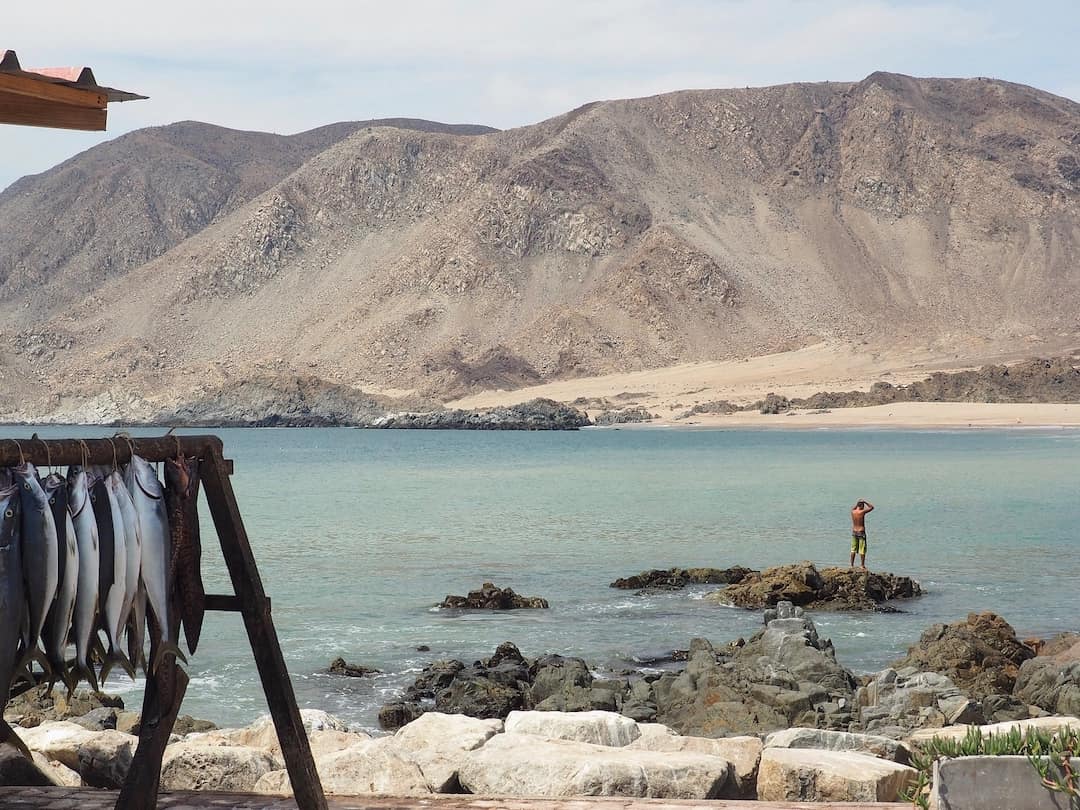
Flights
Travel insurance
Visas
Rooms
Hi, we’re Ian and Nicky, an English couple on a voyage of discovery around the world, and this blog is designed to reflect what we see, think and do. Actually, we’d like to think it also provides information, entertainment and inspiration for other “mature” travellers, too. So please feel free to pour yourself a glass of something suitably chilled and take a look around.


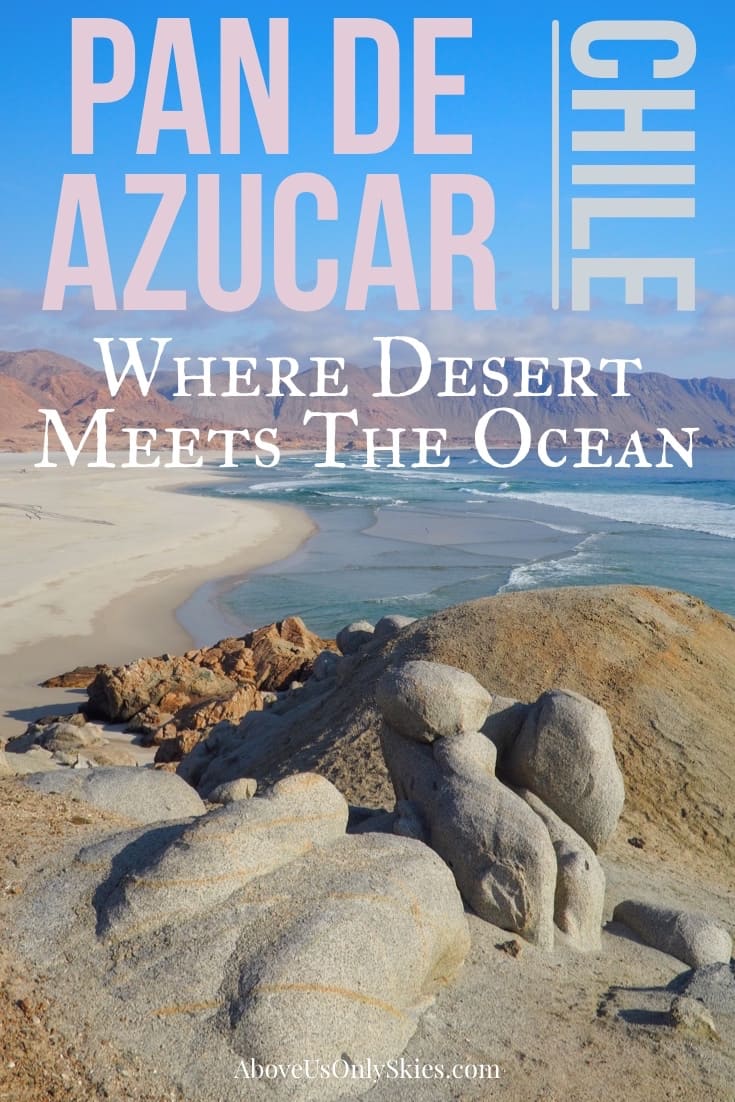

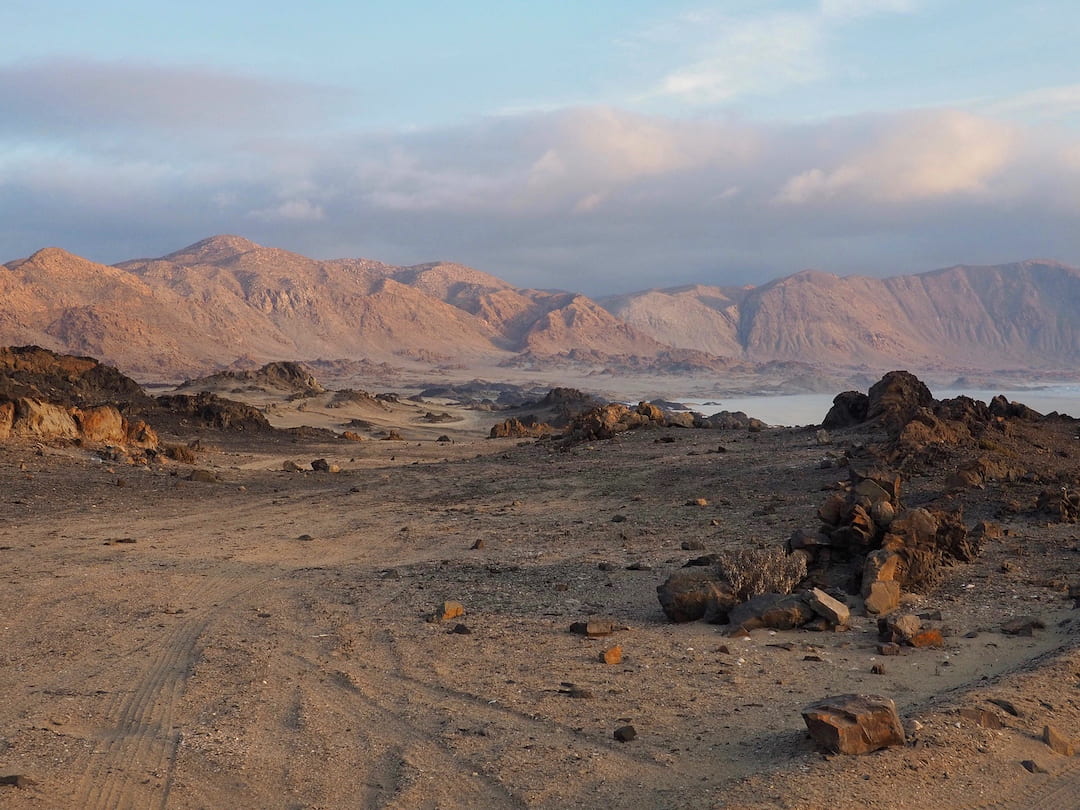
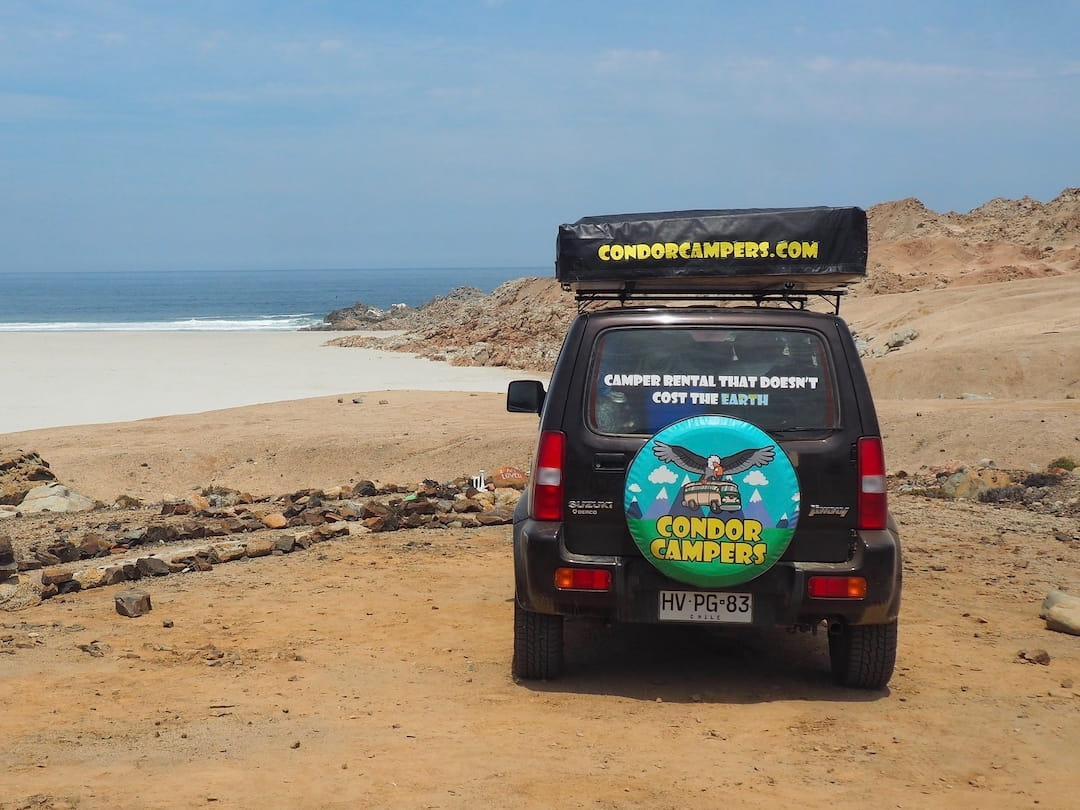

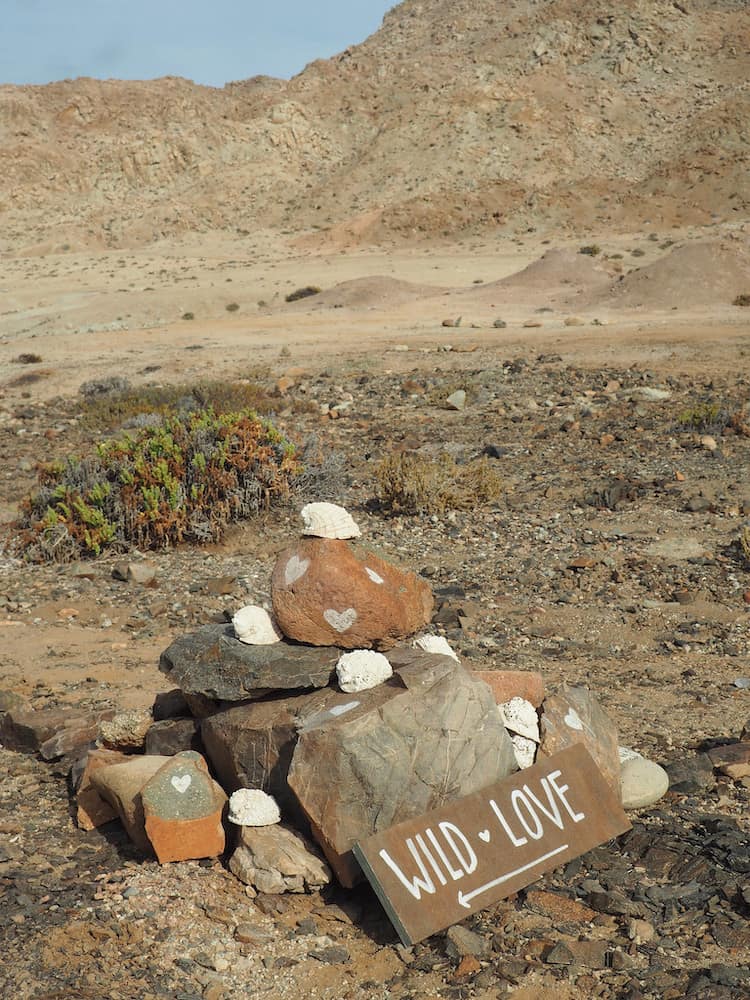
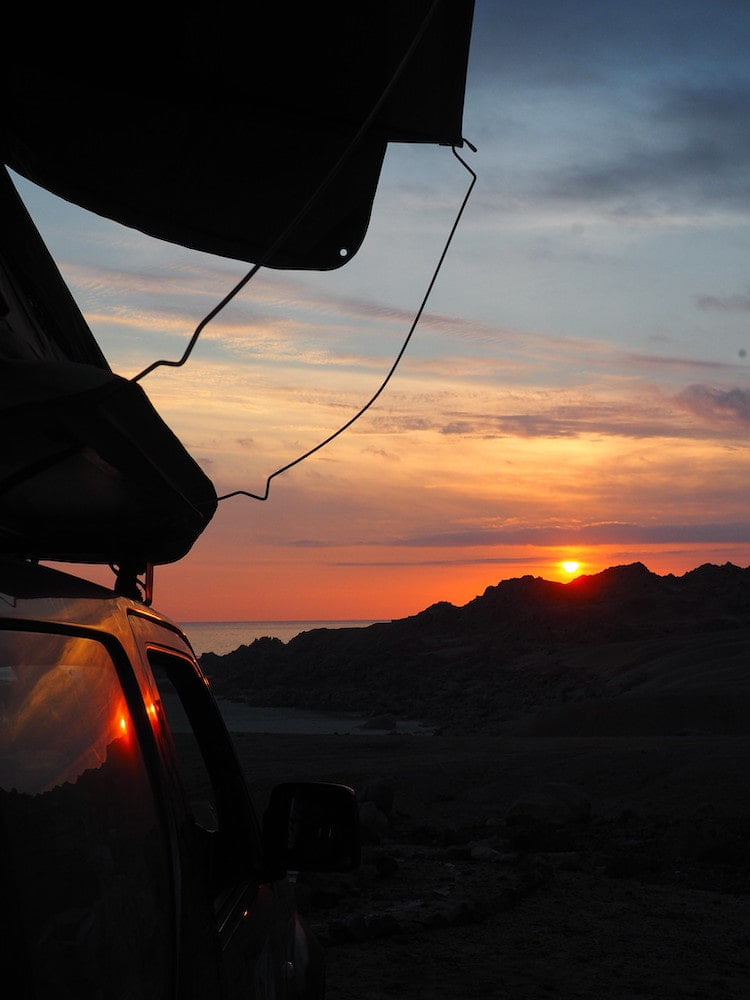
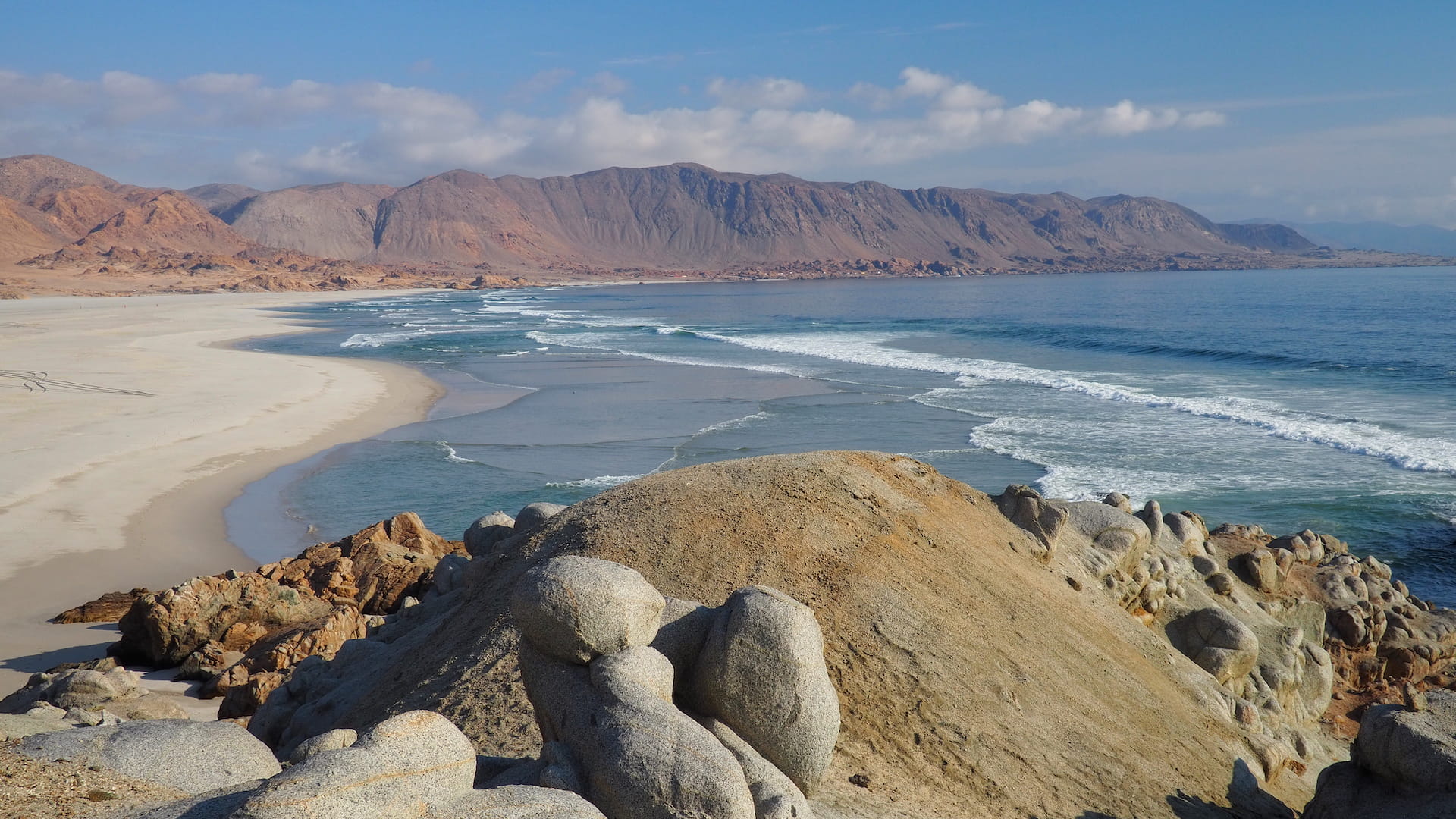
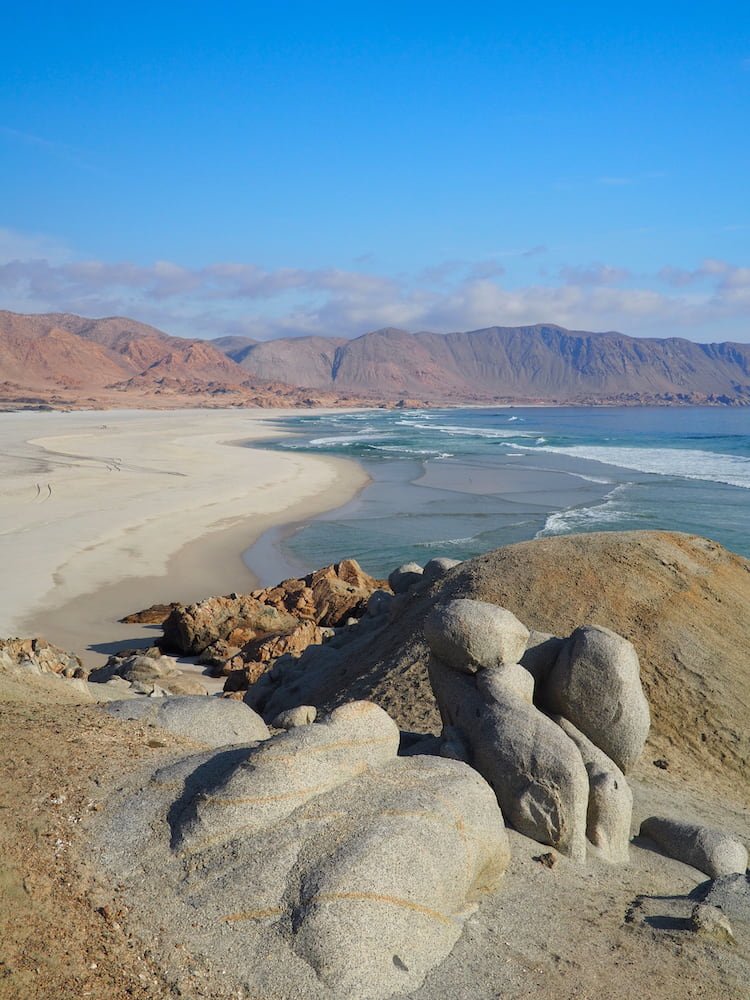
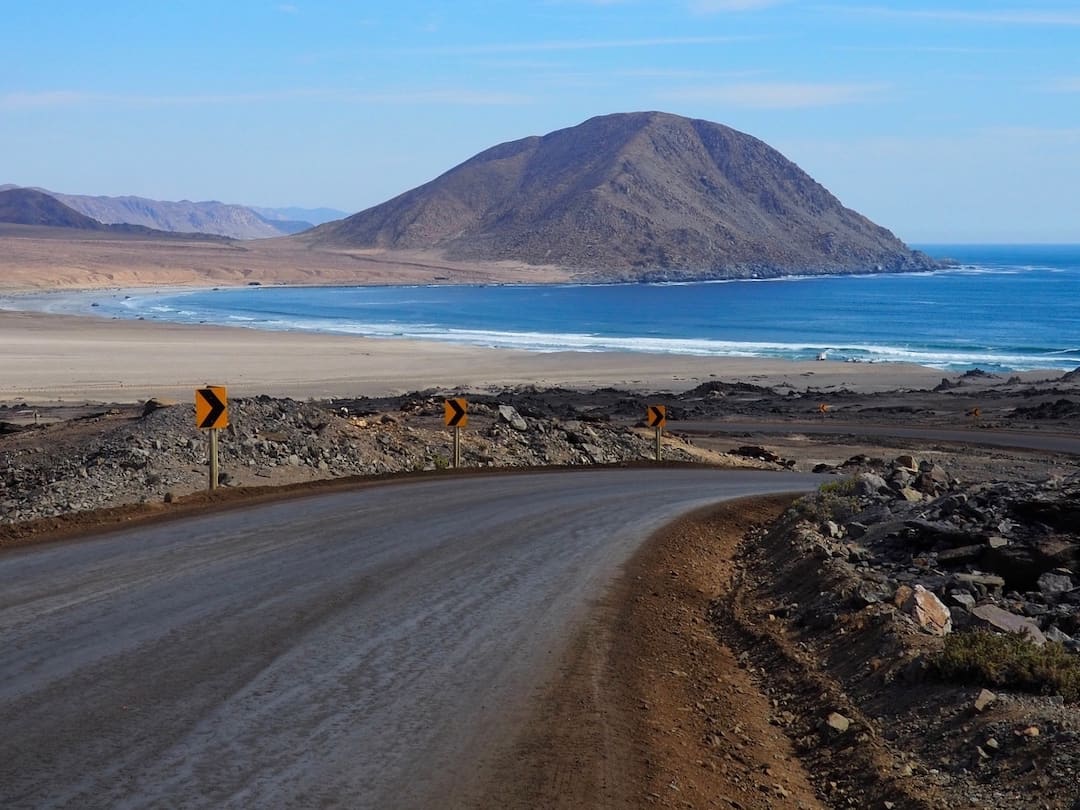
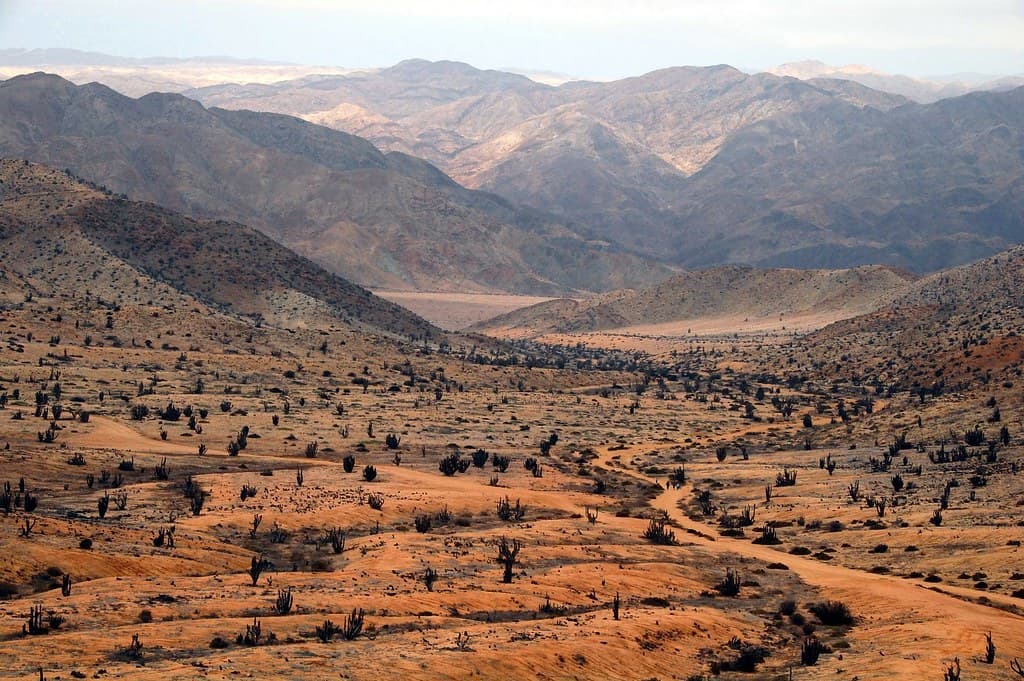
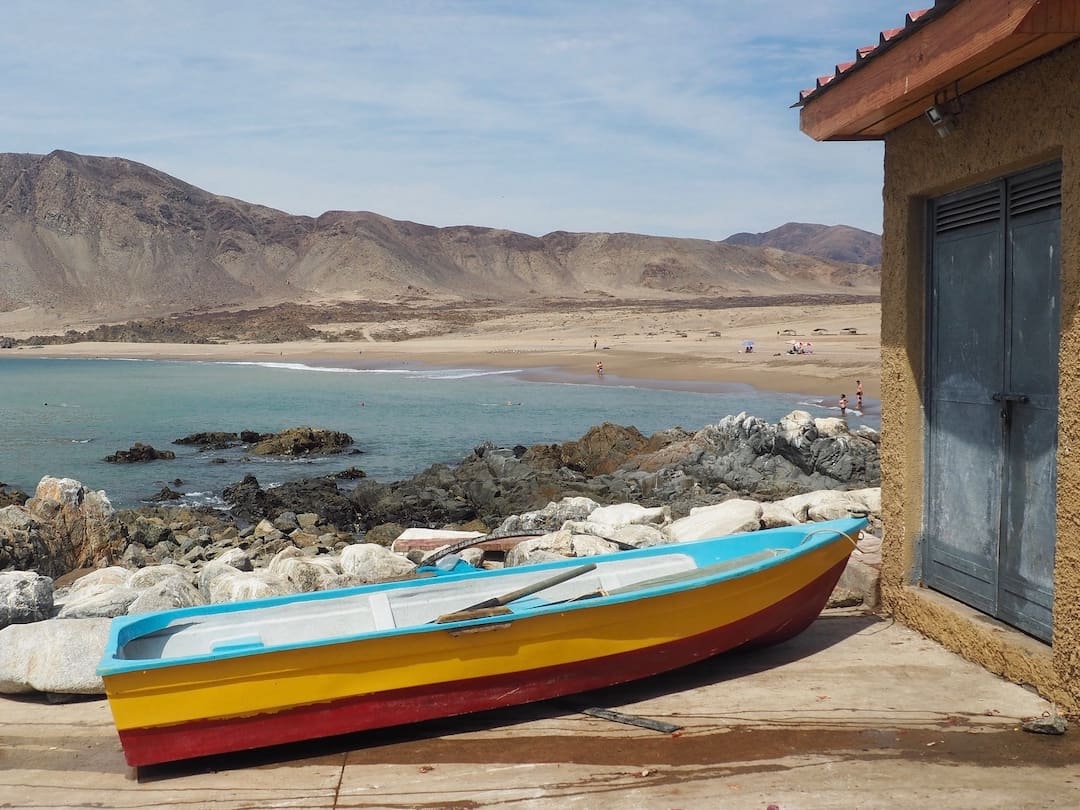
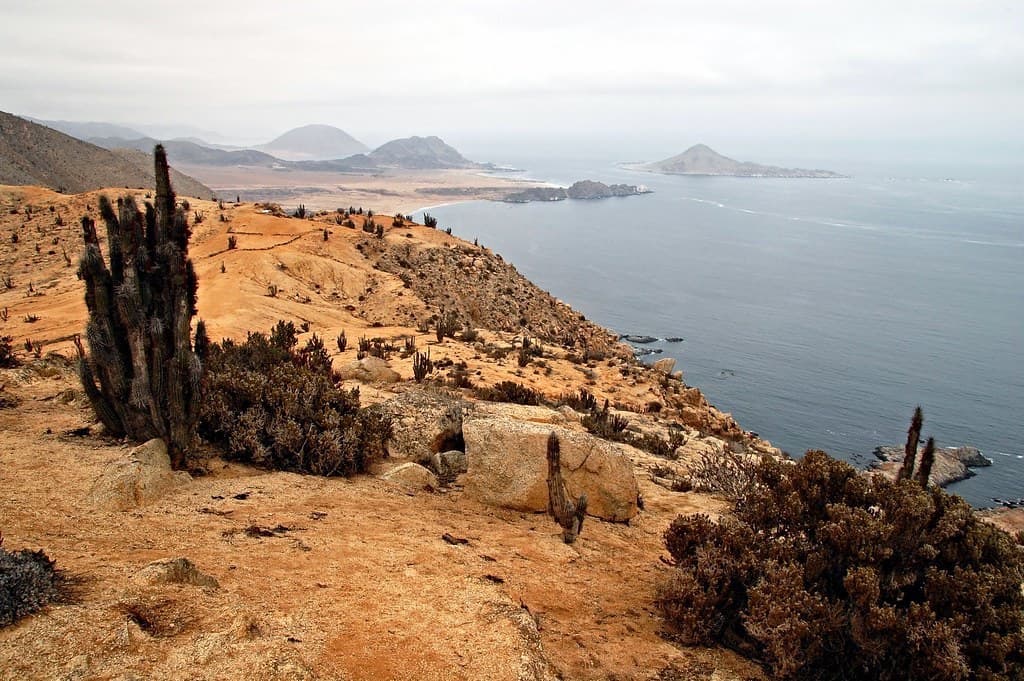


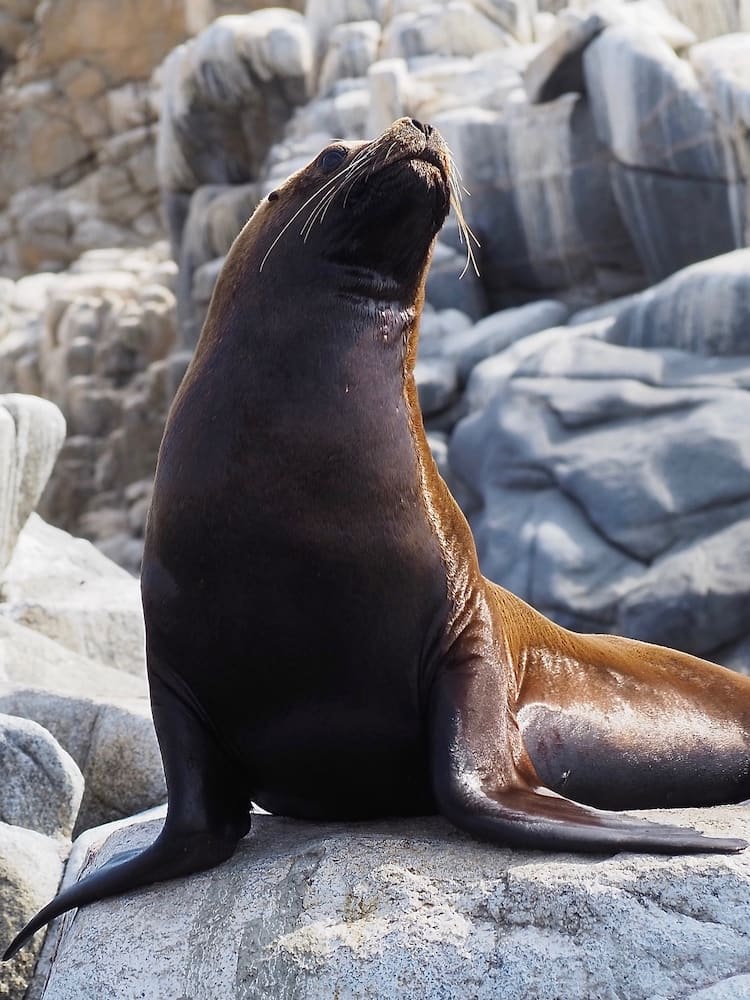
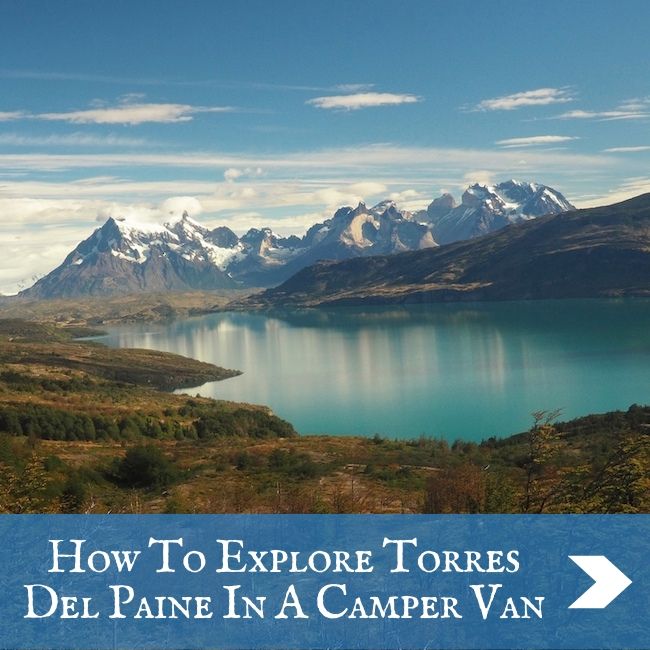


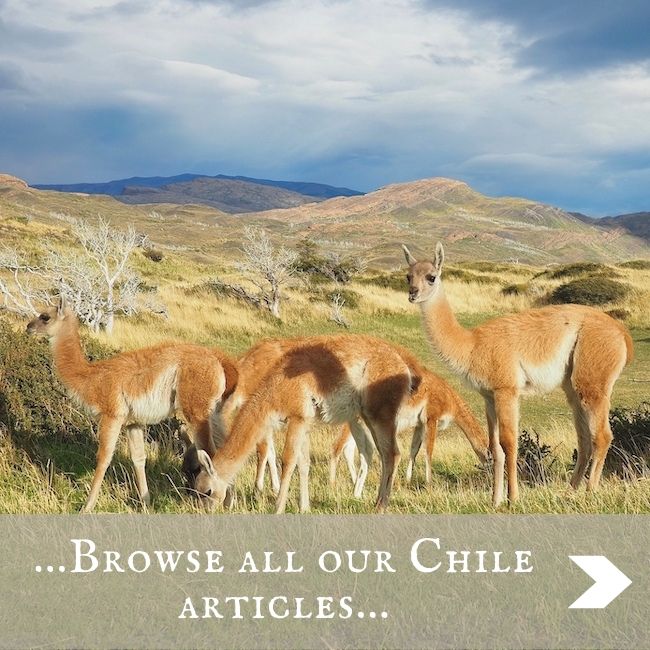
This looks amazing! What a fabulous place. And your photos are superb.
Thanks Alison! It was one of our favourite camping spots in South America without a doubt. Waking to that view every morning was a delight, the memories will be with us forever.
We were just discussing how I want to visit Chile so your post came at the best time. I’ll definitely look into the cabanas and the boat to the island sounds magical. I could sit and look at penguins and sea life all day long. Thanks for all the great tips.
You’re welcome! Chile really is a fabulous country, so much diversity, we highly recommend a trip there, just make sure you allow plenty of time!
Stunning. I have never heard of this place but this kind of travel is right up my alley. Great photos. I’ll be adding to my very long list of places to go as soon as we can travel again.
It’s definitely somewhere we’d recommend in Chile, is your travel list growing ever longer too?!
The new series of Race Around the World just finished and they went through South America, and out of all the countries they visited, I have the biggest yearning to go to Chile and Argentina. It’s a good thing and a bad thing watching travel shows on TV. It’s inspiring, but because we on restricted travel, it’s also frustrating… my visit list is getting bigger. I can’t wait to spread my wings again.
We’ve not watched that series, maybe we should?! But yes, just like you, we’re finding out we don’t really enjoy having our travel wings clipped. Never mind, lots of time to plan the next adventures!
AH! we had to drive right by this park!! but we were also in chile as the protests began…but we got so see pieces of the coast and enjoy! thanks for letting us visit through your article!
You’re very welcome Nadia. Good to see that you at least got to see some of beautiful Chile safely!
Gorgeous guys. Adding this to our list! Cheers!